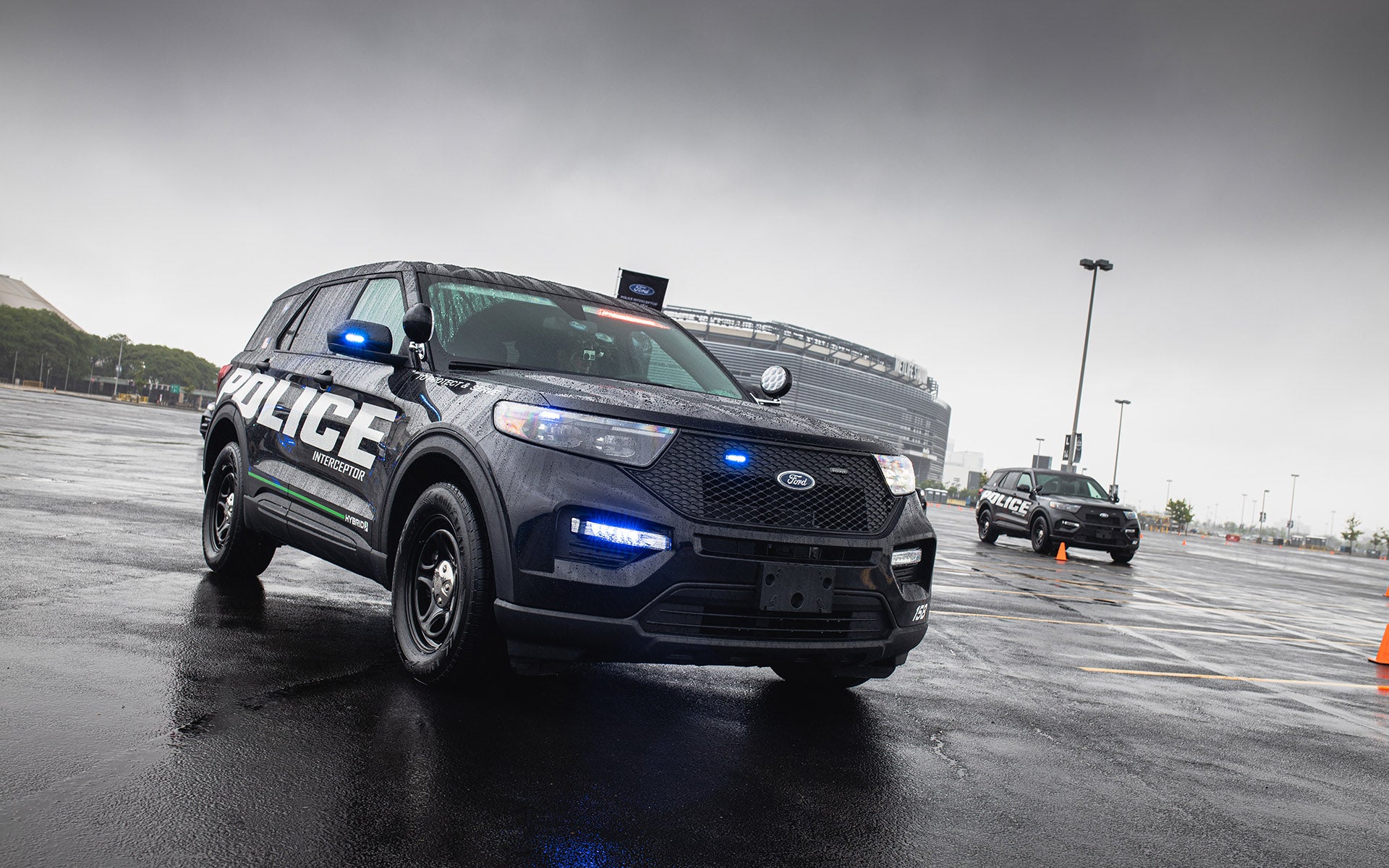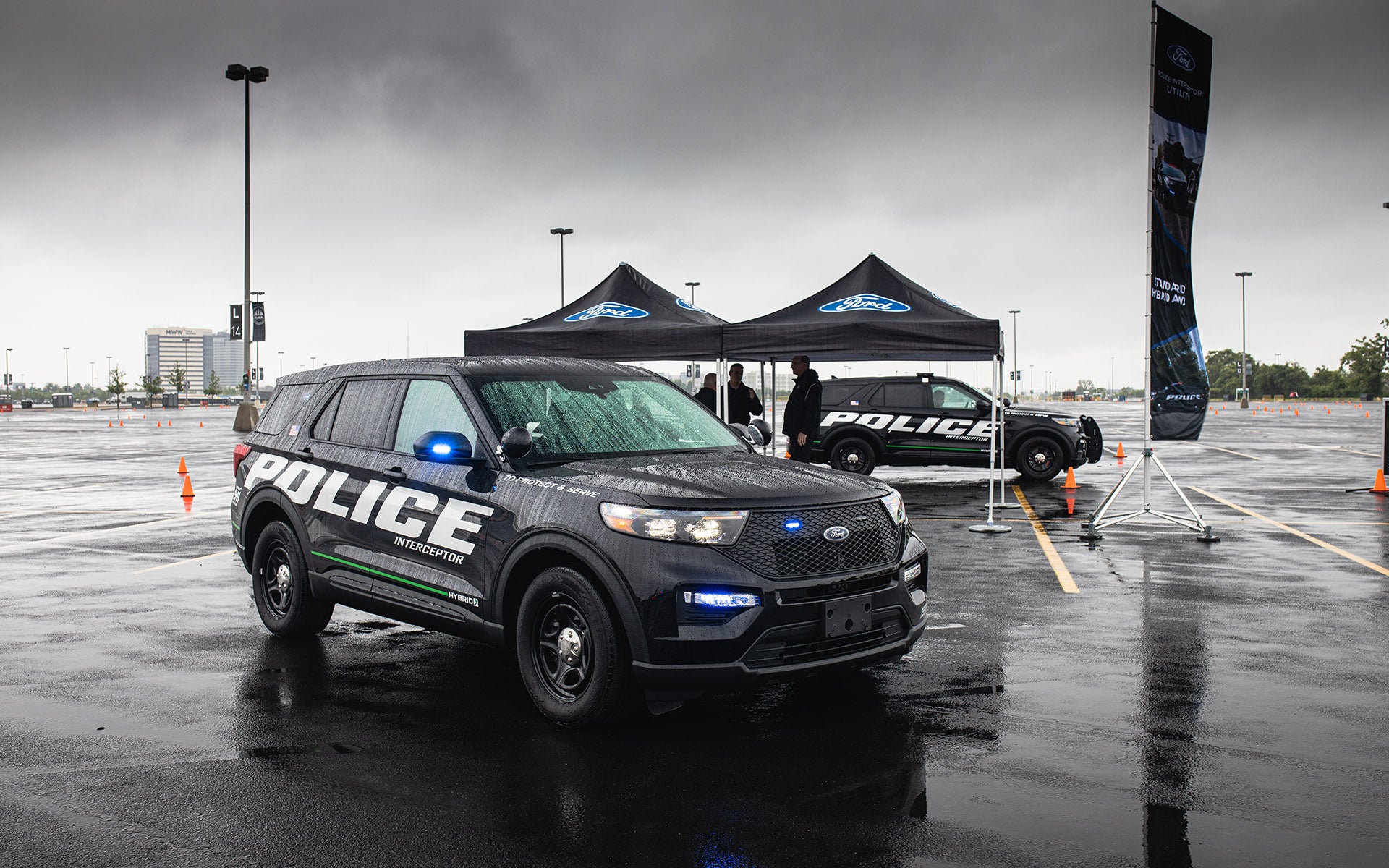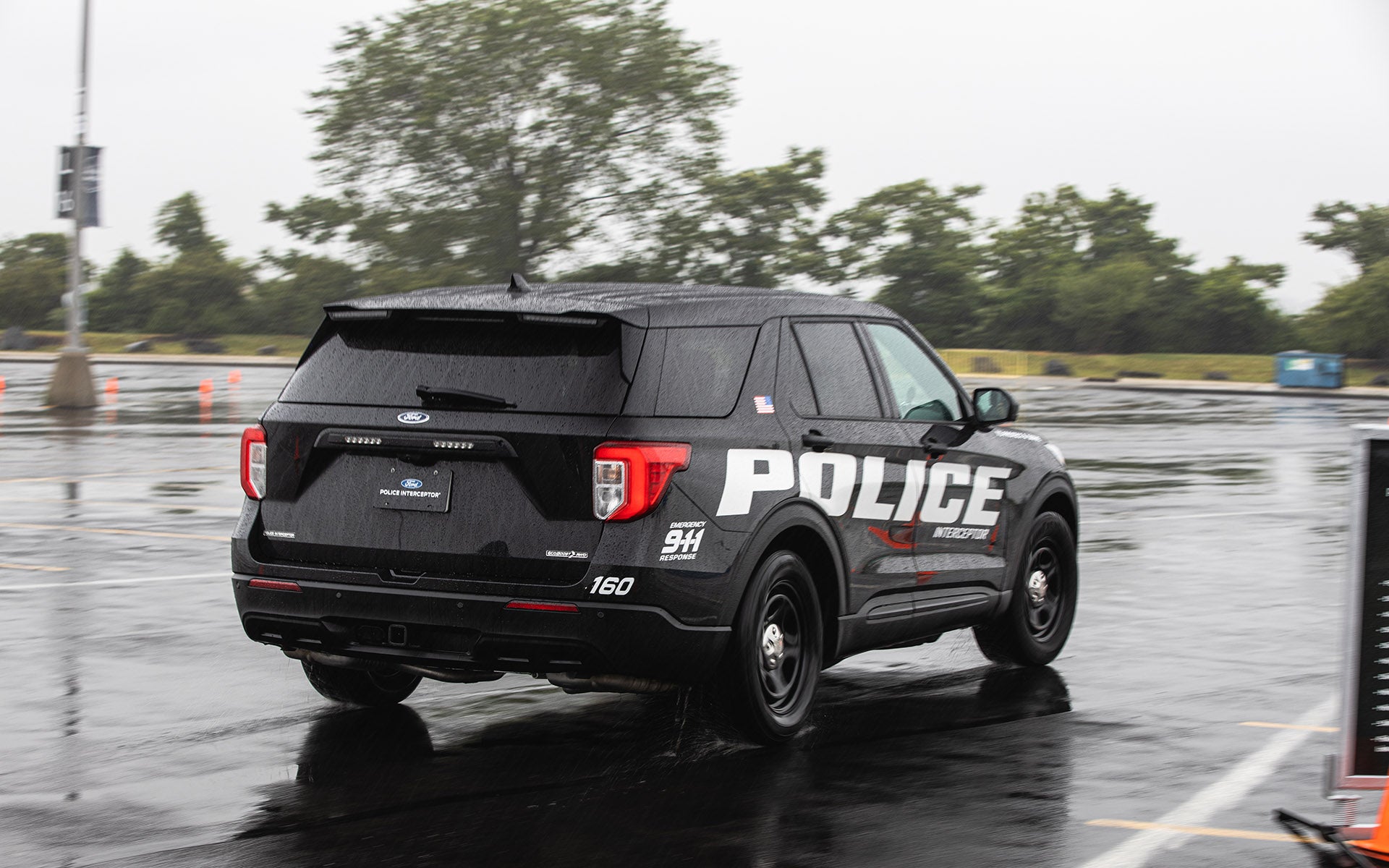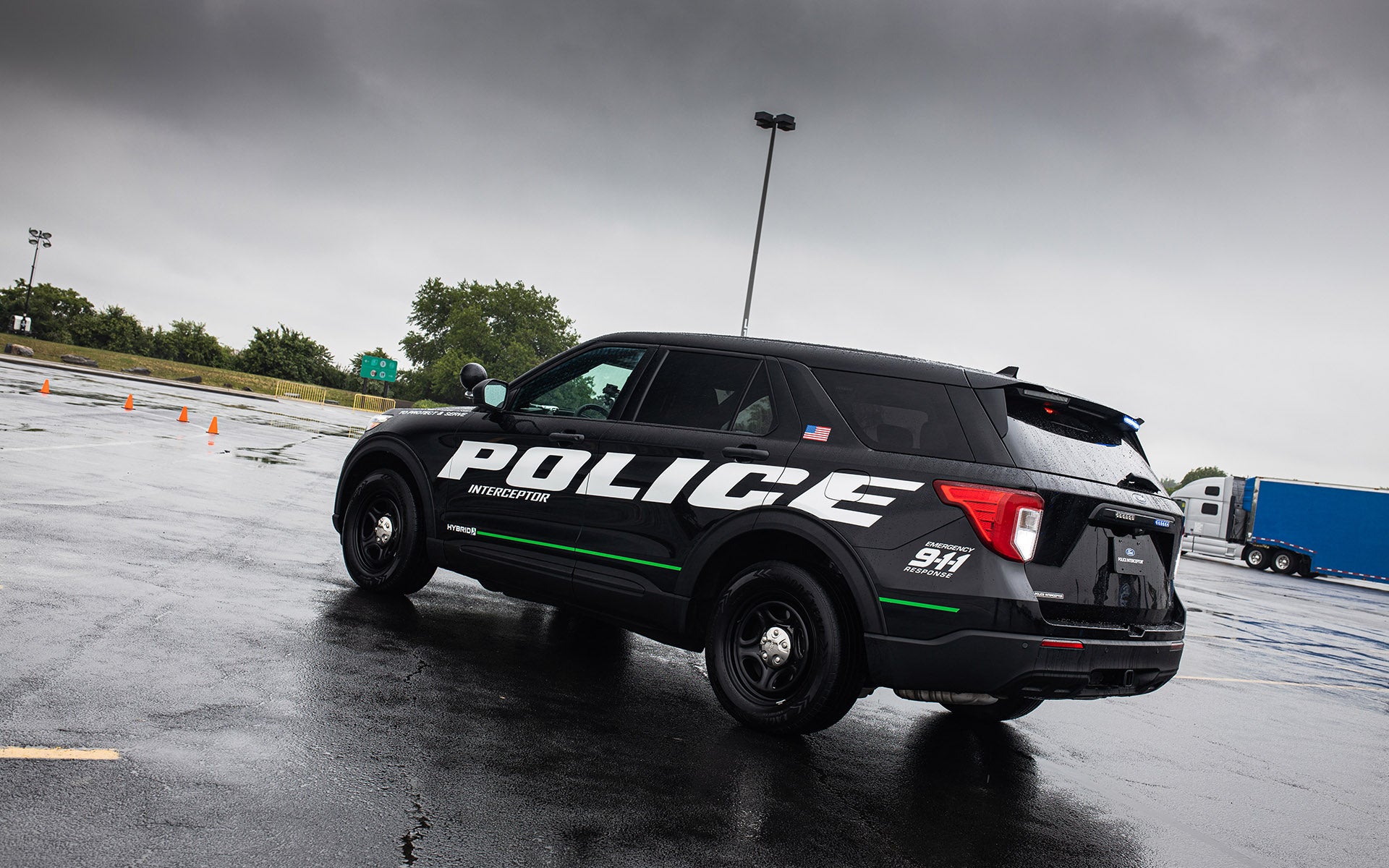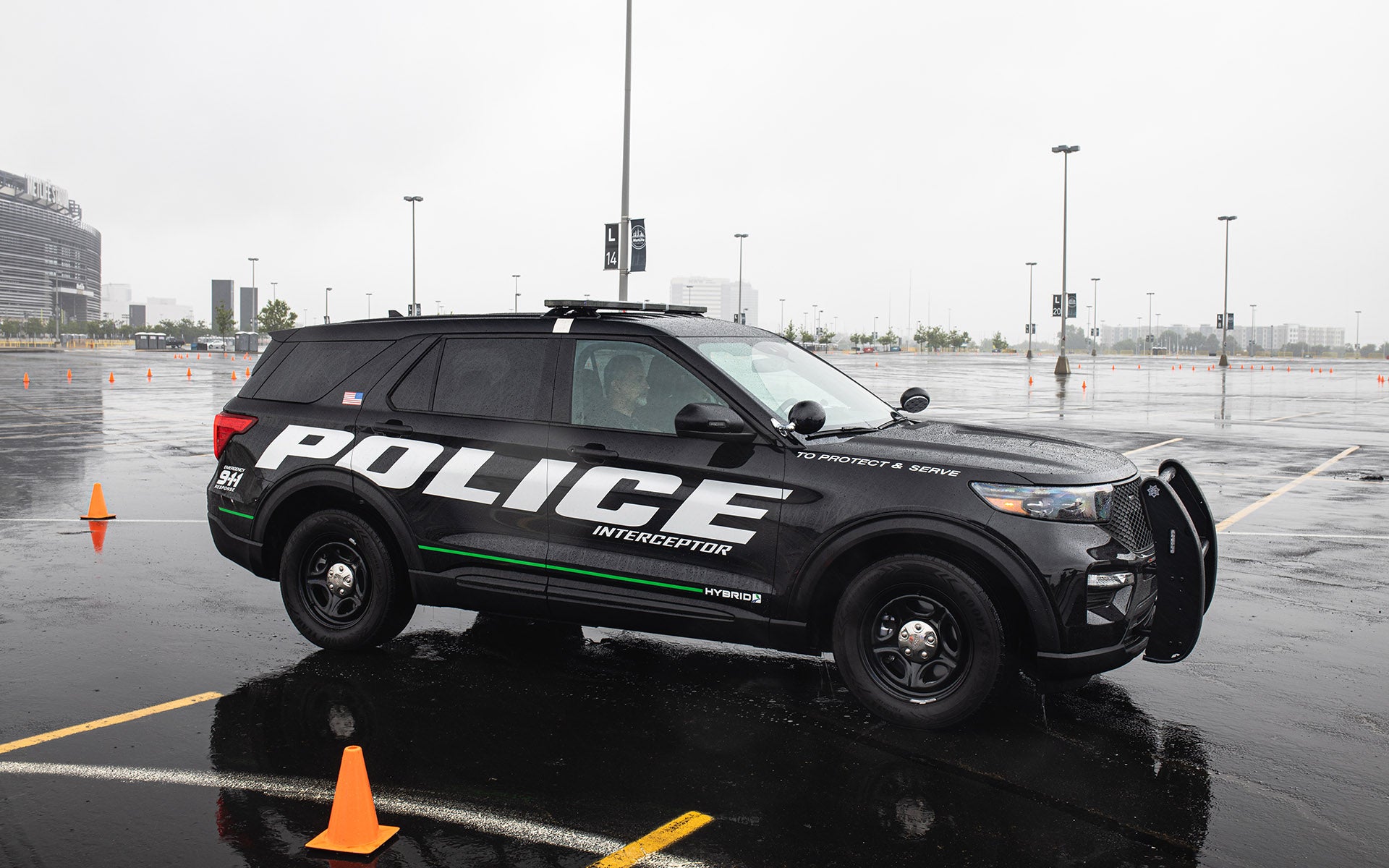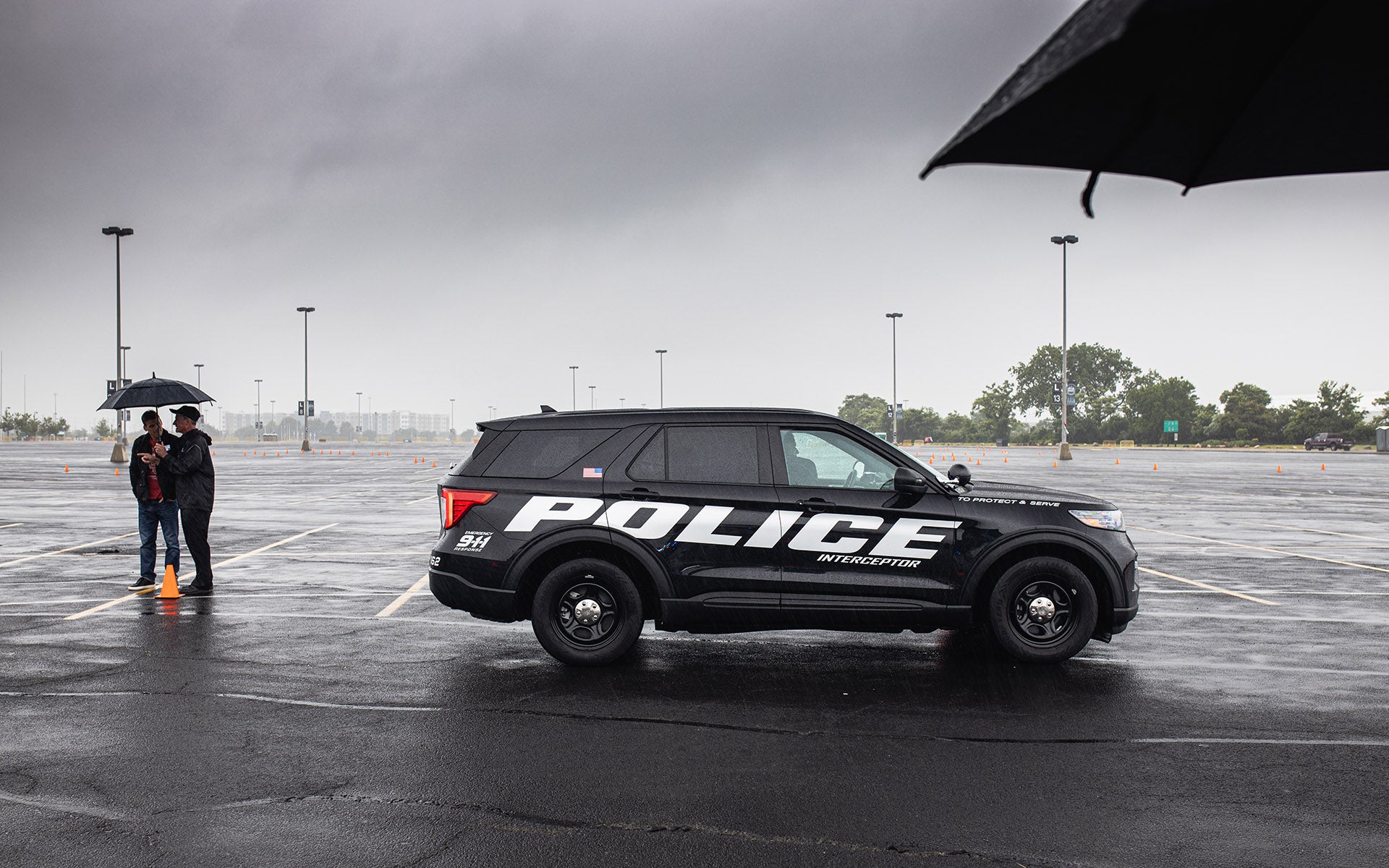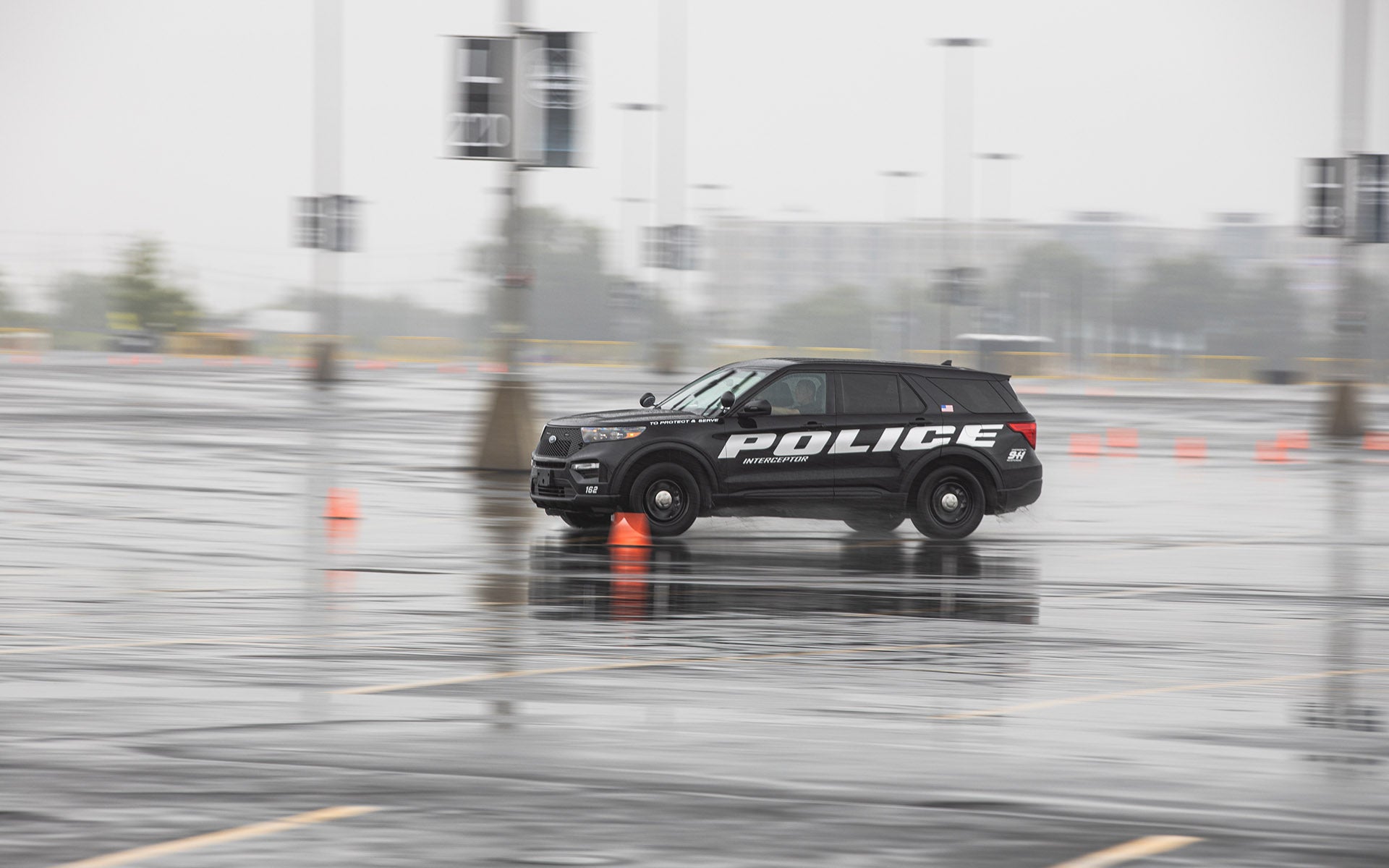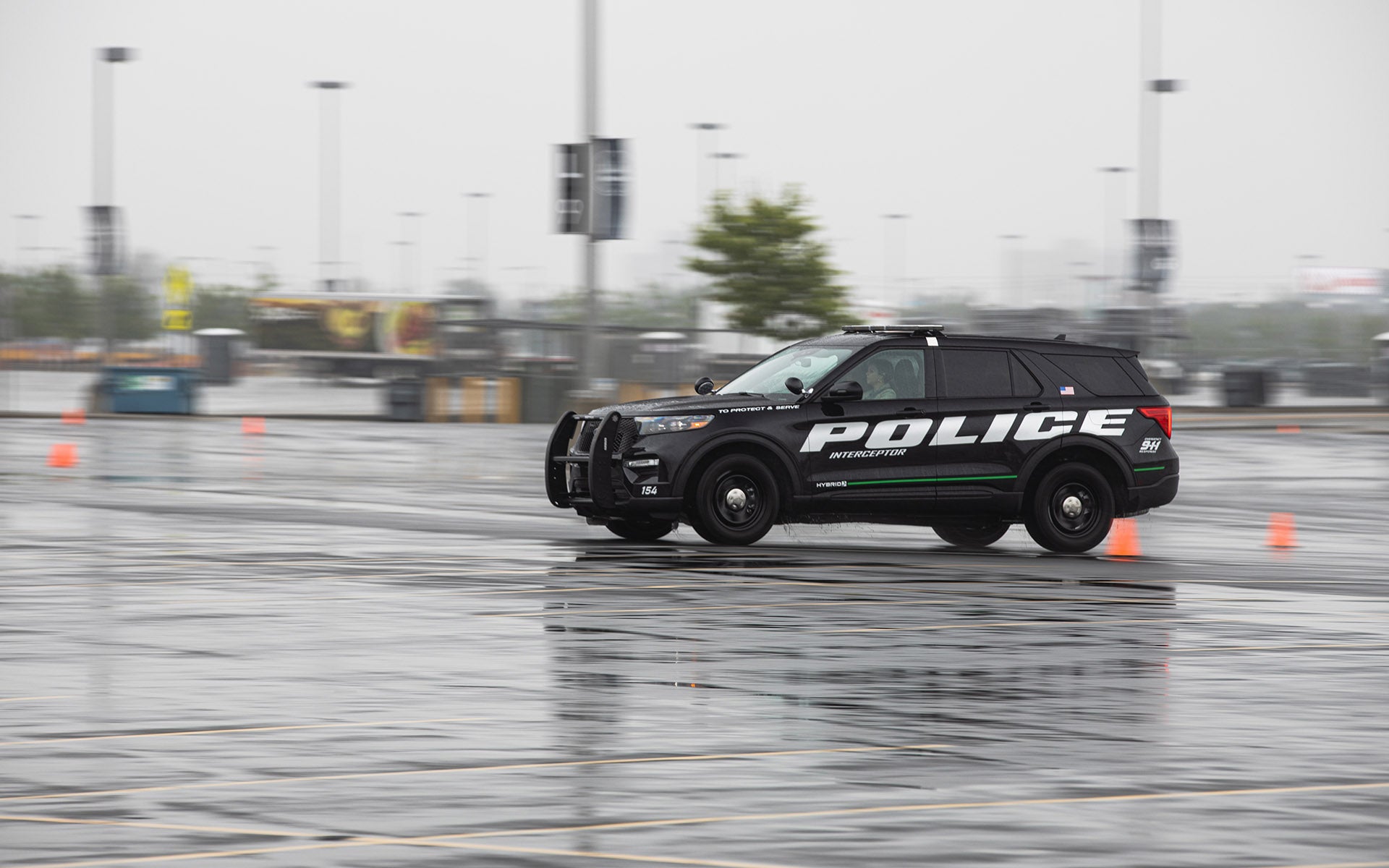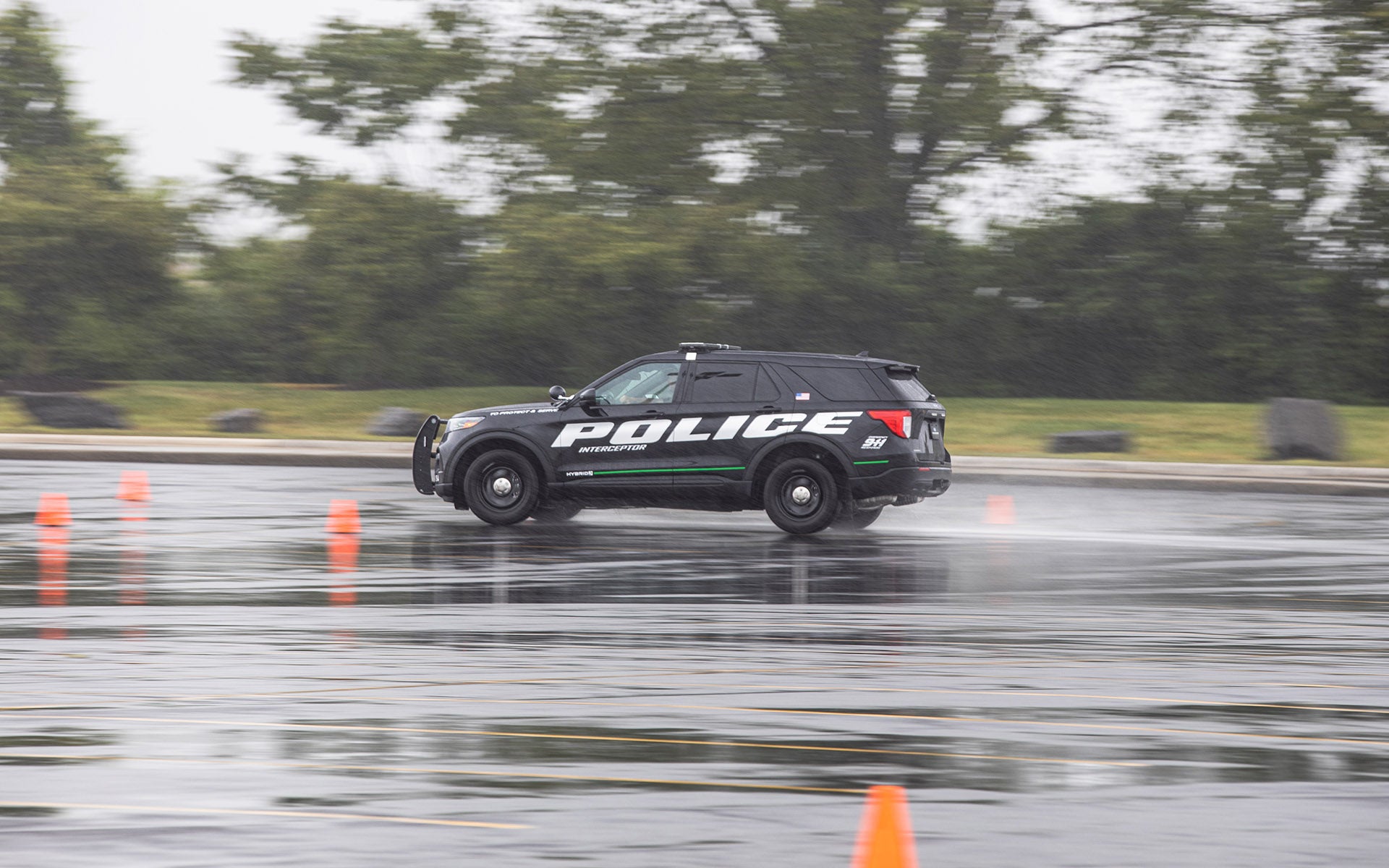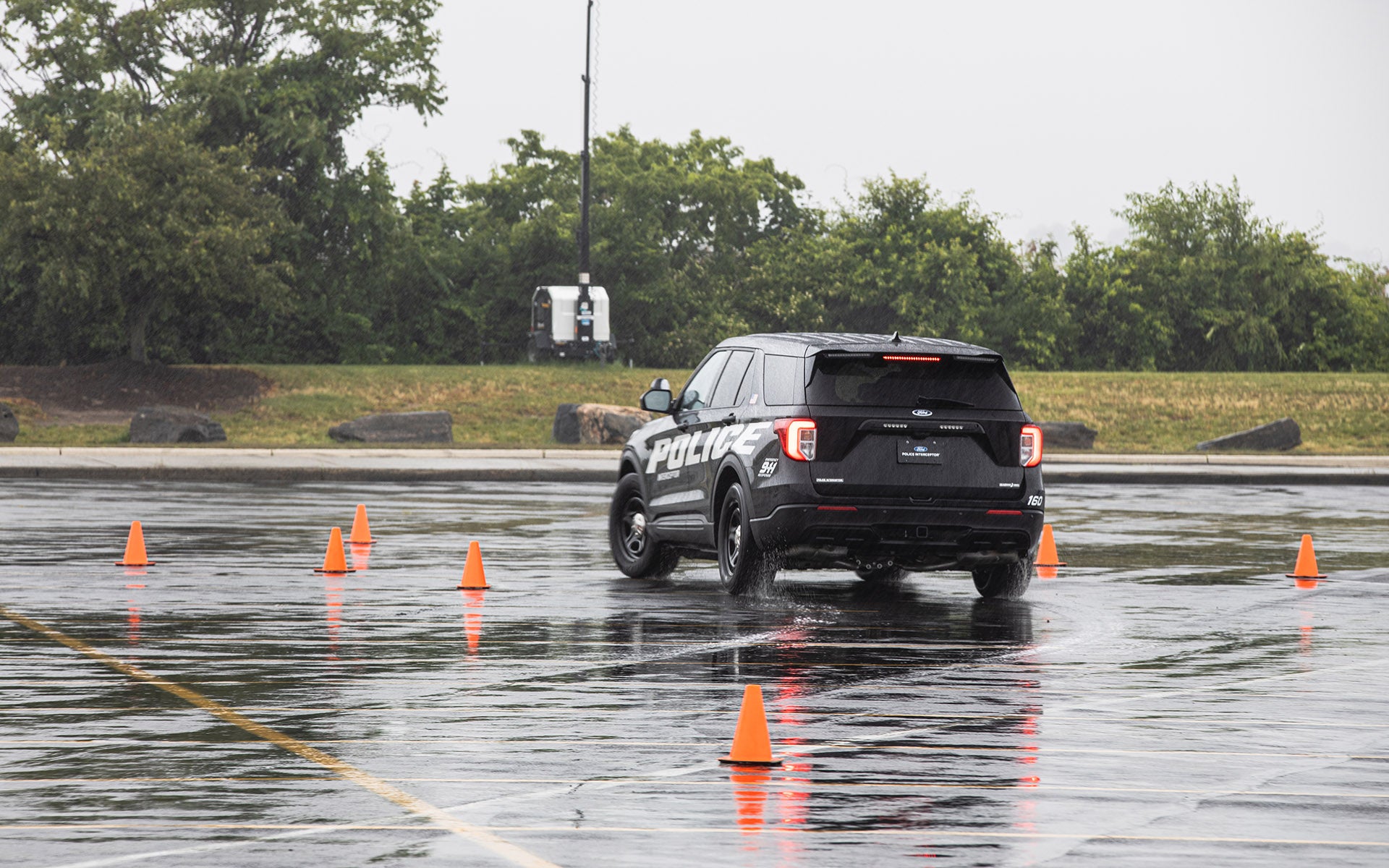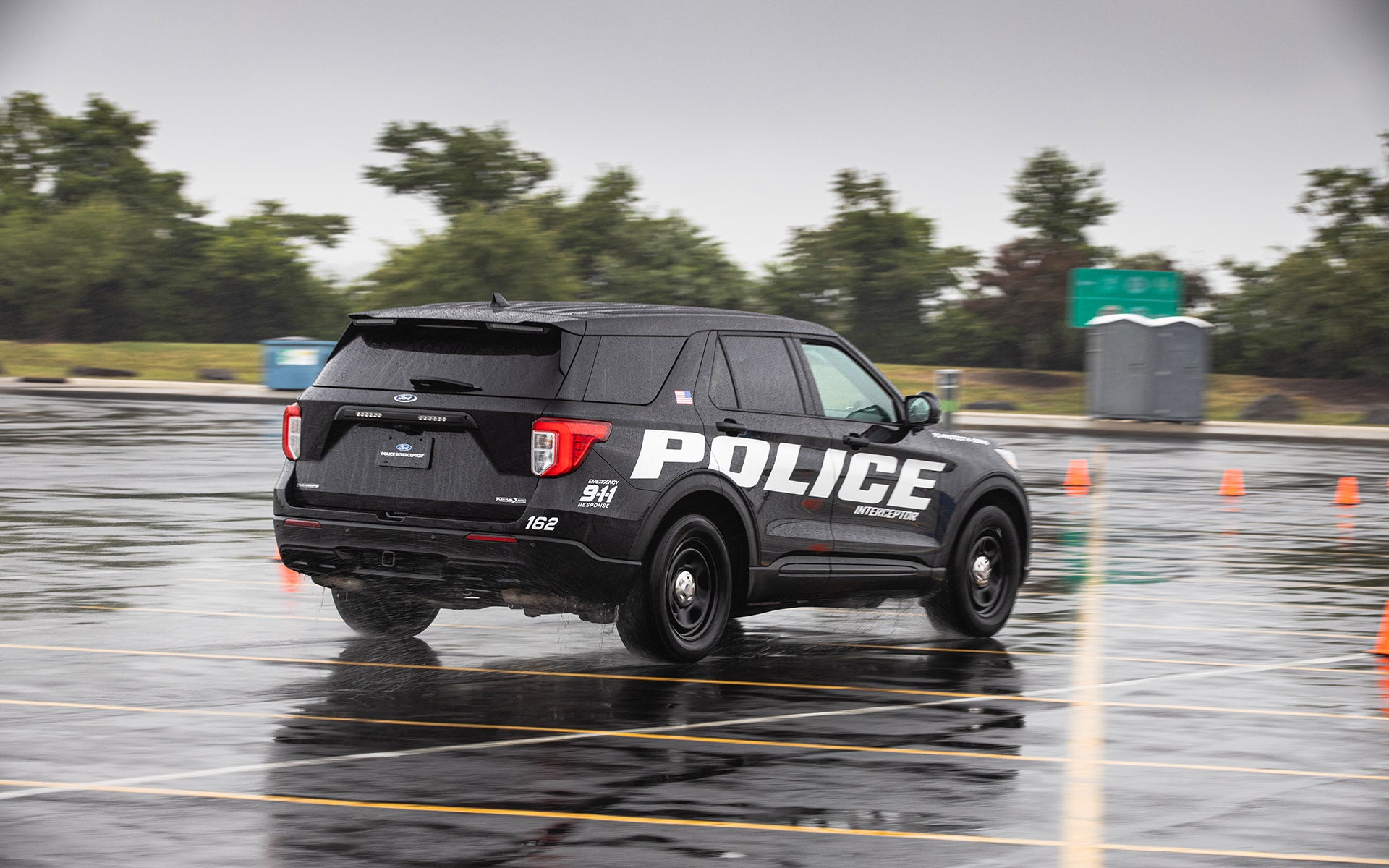Entire generations of rookie and veteran drivers have kept their eyes peeled for the quintessential cop cars: the Ford Crown Victoria, Taurus, and most recently the Dodge Charger and Chevy Tahoe. However, the roster of law enforcement vehicles has expanded in recent years thanks to General Motors, Fiat Chrysler, and Ford's involvement in the sector. And now, thanks to the spirit of competition and the abundance of juicy contracts from local and state police departments, there's a new sheriff in town. Say hello to the new Ford Police Interceptor Utility—a 2020 Ford Explorer with a license to engage in hot pursuit.
With the arrival of the new-generation Ford Explorer, it means that law enforcement fleets nationwide operating Explorer-based police patrol vehicles (PPV) will be getting a new set of wheels in the near future. And to get a sense of what they'll be like, Ford let us behind the wheel of its latest Police Interceptor Utility vehicle at the Meadowlands in Northern New Jersey.
First Impression
At first glance, the new Police Interceptor Utility looks like a beefed-up, heavy-duty version of the popular family SUV. There is, however, way more than what meets the eye.
The outgoing Explorer utilized a front-wheel-drive platform dubbed the "D4," which had been in use since 2004 and was also employed in the Taurus. The new Explorer changes this setup drastically with a modified version of the Lincoln Aviator chassis, meaning that the all-new Explorer and its Interceptor variant gain rear-wheel-drive architecture with all-wheel drive capabilities.
There isn't much to say about the interior. It's spartan compared to civilian Explorer that will end up in your neighbor's driveway, and instead of a center console-mounted shifter, it retains its column-mounted location to make room for auxiliary gear like laptops or other tactical equipment. The front seats get a makeover, however, boasting better lower and upper support as well as a unique design to accommodate bulky equipment belts used by police officers.
Performance
Law enforcement vehicles live abuse-filled lives, so it's important for Ford to make sure they've got the right equipment throughout. The new Police Interceptor Utility rocks cop-spec tires, suspension, brakes, and steering components. Under the hood, and for the first time in a police-rated Ford vehicle, a V6 hybrid powertrain will be offered alongside the hefty naturally aspirated and EcoBoost variants.
The base engine offered is the 3.3-liter Duratec V6, which offers 285 horsepower and 260 pound-feet of torque. The next engine up is the premium hybrid (essentially the same base-model V6 minus hybrid assist), which boasts 318 horsepower and 322 pound-feet of torque. Sitting at the top of the range is a 3.0-liter EcoBoost twin-turbo V6, which puts out a whopping 400 horsepower and 415 pound-feet of torque. Thinking of outrunning the boys in blue? Think again.
Like all other hybrids, the electric motor provides instant torque before the gas engine takes over. And while performance is certainly a highlight of the hybrid variant, the real purpose of the powertrain is to help police outfits save on gasoline through all the idling and low-speed driving they perform each and every day. Remember, police cars can spend multiple hours each day idling, so a hybrid powertrain could save fortunes in yearly fuel bills.
Ford claims the new hybrid Police Interceptor Utility vehicle can achieve an EPA-estimated 24 mpg combined fuel economy rating, resulting in only 833 gallons of gas consumed per year based on a yearly mileage of 20,000 miles. That’s a considerable improvement over the previous car’s 3.7-liter gasoline engine, which only returned 17 mpg on a combined cycle and consumed an average of 1,176 gallons over the same 20,000 miles. If our math serves us right, that's 343 fewer gallons each year, at roughly $3 per gallon, that's a savings of $1,029 per year per cop car.
Besides saving fuel, the hybrid system also offers two pursuit modes that affect the way the hybrid system delivers power and recharges its battery: one for high-speed pursuits and another for city pursuits. The modes change on the fly and automatically according to the officer’s driving style. For instance, the high-speed pursuit mode essentially puts the system into “high-performance mode,” where it focuses more on delivering the most power rather than saving it to recharge the battery. The city mode prioritizes charging the battery so that drivers can utilize the instant delivery of the electric motor when zipping around town.
Driving Impressions
Our time behind the wheel was brief and restricted to a large parking lot, but the differences over the old Explorer-based PPV were immediately felt at the first jab of the throttle and turn of the steering wheel. No longer does the new Interceptor feel like a heavy and sluggish crossover. The rear-drive platform makes the car feel significantly more balanced, particularly when transitioning from the brake to the accelerator mid-corner, as well as during evasive maneuvers.
Despite the new vehicle's composed nature, it wasn't terribly difficult to break into a dramatic, tail-happy slide in typical police chase fashion. If you want this bad boy to go, it will go, and you'll have to have the right training to learn how to control it.
“All of us at the department still miss the Crown Victorias," Lieutenant Daniel McLaughlin of the Hillsdale Police Department told The Drive. "They were fast, tough, durable, and you could throw anything at them and they’d just shrug it off. But these new Explorers are really nice. They drive really nice.”
“The old Explorers, which we already use, drive great for such large vehicles—but these drive even better," he added.
The Bottom Line
Because of the added technology of the hybrid powertrain, Ford claims the new Police Interceptor Utility’s price will hike up by about $3,500 over the standard V6 model that starts at approximately $37,500. That being said, the Blue Oval hopes police outfits will realize the car's premium should pay for itself within one year.
“The problem with the hybrid, however, is that it might too expensive for us initially,” West Haven, Connecticut police officer Chris Nolan told The Drive. “Plus, we don’t really sit around a lot and idle. Our guys are always moving, always on the run, so we wouldn’t really benefit from the hybrid powertrain. At the same time, the power it offers is incredible, but we don’t need that sort of performance. We’re not Los Angeles where high-speed chases happen all the time and they could really use that power.”
Officers Nolan and McLaughlin, who were both on-hand at the media driving event organized by Ford, believe that they’ll most likely resort to the standard 3.3-liter V6 models as they offer everything their departments need while balancing cost and performance.
Regardless of the fuel-saving benefits of the new hybrid Police Interceptor Utility, the new crime-fighting SUV will certainly provide a more confident and considerably better driving experience to the folks who risk their lives day in and day out to keep us safe.

